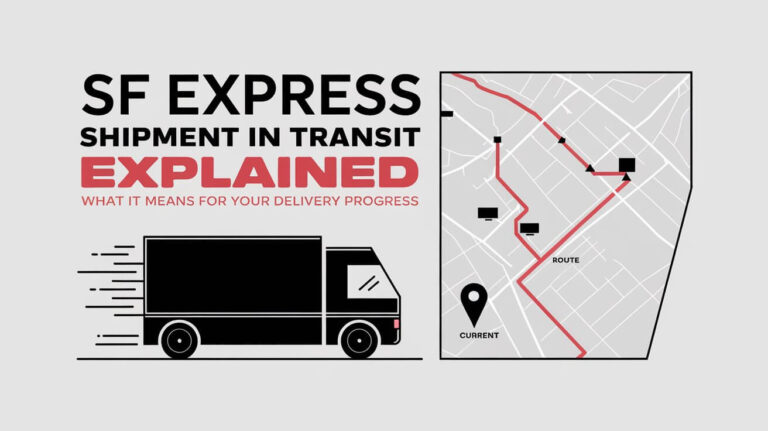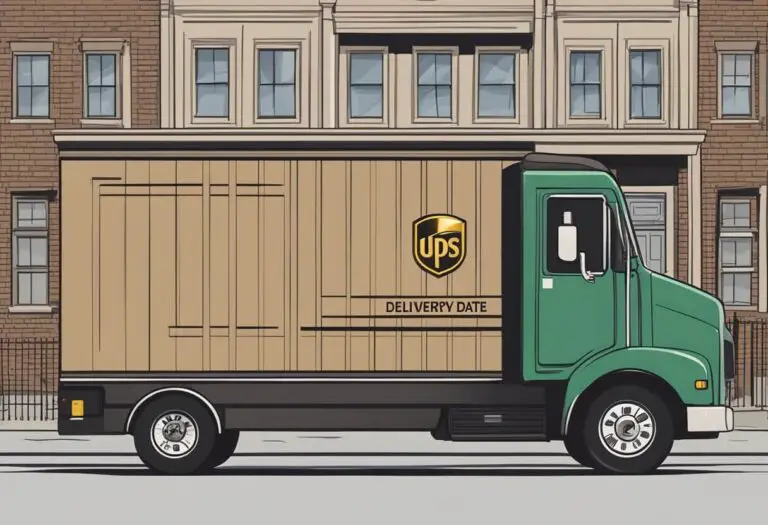Who Take Responsibility When a Package Goes to Wrong Address?
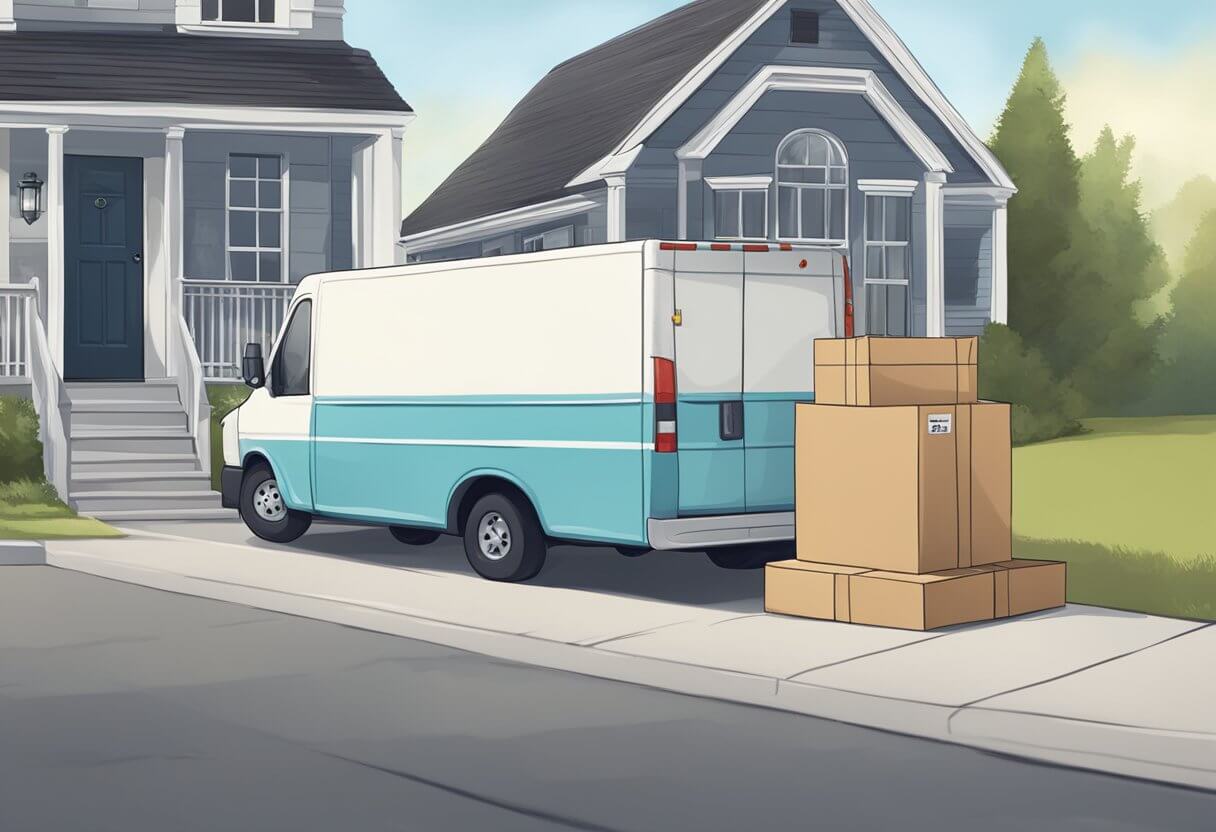
Online shopping has become incredibly convenient. With just a few clicks, we can purchase almost anything imaginable and have it conveniently delivered right to our doorstep. However, mistakes happen and sometimes packages get delivered to the wrong address. So who is responsible when this occurs – the online seller, the carrier like USPS or FedEx, or even the buyer?
Getting an order sent to the incorrect location can be frustrating, especially if the package contains important, valuable or time-sensitive items. Fortunately there are steps that can be taken to resolve these annoying mistaken deliveries. But in order to remedy the situation, it’s important to first understand where accountability lies if a package is delivered incorrectly.
This article will examine the key questions around liability for botched deliveries, including:
- Who is legally responsible for packages that go astray?
- What recourse does the buyer have if their order vanishes?
- How should recipients handle packages that show up at their address unintentionally?
- What policies do carriers like USPS and FedEx have around misdirected parcels?
First let’s look at why so many deliveries end up at the wrong place to begin with.
Common Reasons Packages Get Misdelivered
There are a few key reasons why carriers and couriers occasionally deliver packages to the incorrect address:
Human Error
With millions of packages in transit every day, there is plenty of room for human error. Carriers may jot down an address incorrectly when picking up a shipment or misread hard to decipher labels. Stress and heavy workloads can also contribute to mistakes. Similarly, shippers can easily transpose numbers or make typos when entering addresses online.
Incorrect Address Information
Errors can creep in when buyers submit the shipping address during online checkout on e-commerce sites. Or a sender may not have the most up-to-date address if the recipient recently moved. Failures to update address changes are a prime cause of misdirected deliveries.
Similar Addresses
When house numbers are identical other than a one digit difference, mail carriers can easily swap deliveries between addresses in close proximity. For instance, a package intended for 1234 Oak St could end up at 1224 Oak St instead.
Missing or Illegible Labels
If shipping labels fall off packages in transit or important details are smudged, obscured or incomplete, carriers have a much harder time ensuring accurate delivery. Damaged labels lead to many deliveries ending up at the wrong homes.
While honest mistakes cause plenty of misdeliveries, theft also rears its ugly head far too often…
Why So Many Packages Are Stolen After Wrong Delivery?
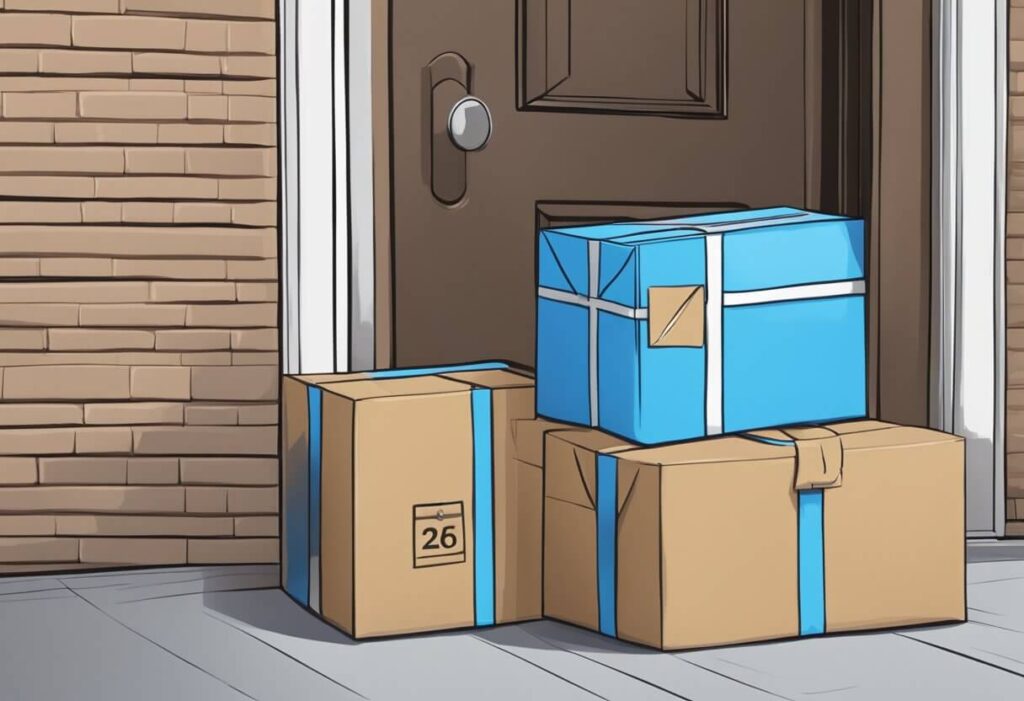
A growing scourge known as “porch piracy” has given rise to thieves swiping packages sitting outside homes when residents aren’t around. This has always been an issue around the holidays, but more home deliveries means more temptation and opportunities for sticky fingers.
Carriers sometimes errantly deliver an intended package to the wrong block. Opportunistic crooks spot these errant packages and make off with them before the resident returns home. Or worse, dishonest people intentionally intercept parcels after learning of a misdelivery in their neighborhood through word-of-mouth or social media posts.
The delivery driver may leave the package at the incorrect address without receiving a signature or confirmation. And once it’s taken, the rightful owner often has no idea where their missing order ended up.
Some devious thieves even intentionally provide wrong addresses when placing online orders, knowing they can scoop up the items from neighbors’ doorsteps once delivered.
This epidemic of porch piracy costs US consumers billions of dollars annually in stolen goods. And about 90% of Americans who shop online have had a package stolen or know someone who has.
While carriers try to curb theft, low rates of arrest mean brazen porch pirates continue to operate with relative impunity.
Some tips to protect packages from thieves include:
- Requiring in-person signature confirmation upon delivery
- Using secure locker pickup locations
- Installing smart doorbell cameras to deter criminals
- Notifying neighbors to watch for unexpected packages
Now let’s examine where accountability lies when deliveries go wrong.
The Legal Responsibilities of Carriers, Sellers, and Buyers

Who bears responsibility when a package takes detours or goes missing varies upon the specific circumstances. However, some general principles apply when determining accountability.
Delivery Companies Have a Duty to Properly Deliver Packages
Couriers like USPS, UPS and FedEx are contracted and compensated to safely deliver packages to the correct destination address provided by the shipper or seller. So issues like inserting incorrect addresses manually or delivering unverified packages without recipient confirmation constitute failure to perform this contractual duty.
If driver negligence, errors or theft during transit causes the delivery snafus, the burden of responsibility falls squarely upon the carriers. But their exact accountability depends on the policies and legal terms agreed to with their corporate customers regarding corrective actions like returning, replacing or refunding orders.
Recourse for individuals depends largely on whether insurance was purchased. More on this shortly.
Sellers Must Properly Package and Address Outbound Orders
Online merchants and other shippers packaging orders must take reasonable care to label parcels clearly with precise delivery information. Using easily damaged shipping labels or failing to include a return address constitute violations of their requirements.
If the seller’s errors directly lead to incorrect delivery, they share culpability with the carrier depending upon agreements and insurance policies governing transactions. Many merchants choose goodwill refunds or replacements upon delivery mishaps unless negligence is clearly the buyer’s fault.
Buyers Must Provide Accurate Addresses to Sellers
Buyers hold responsibility to furnish correct, complete shipping addresses when submitting online orders or signing agreements involving delivery of physical goods.
While honest mistakes occur, frequently changed addresses that aren’t updated with all vendors reliably cause many errant deliveries. Customers also need clearly displayed house numbers and safe access points for carriers upon arrival.
Failing to meet these requirements contributes to misdeliveries, so buyers share the onus jointly with sellers and carriers.
Now let’s explore steps customers should take once a package delivery goes wrong.
What to Do if Your Package Was Delivered to the Wrong Place?
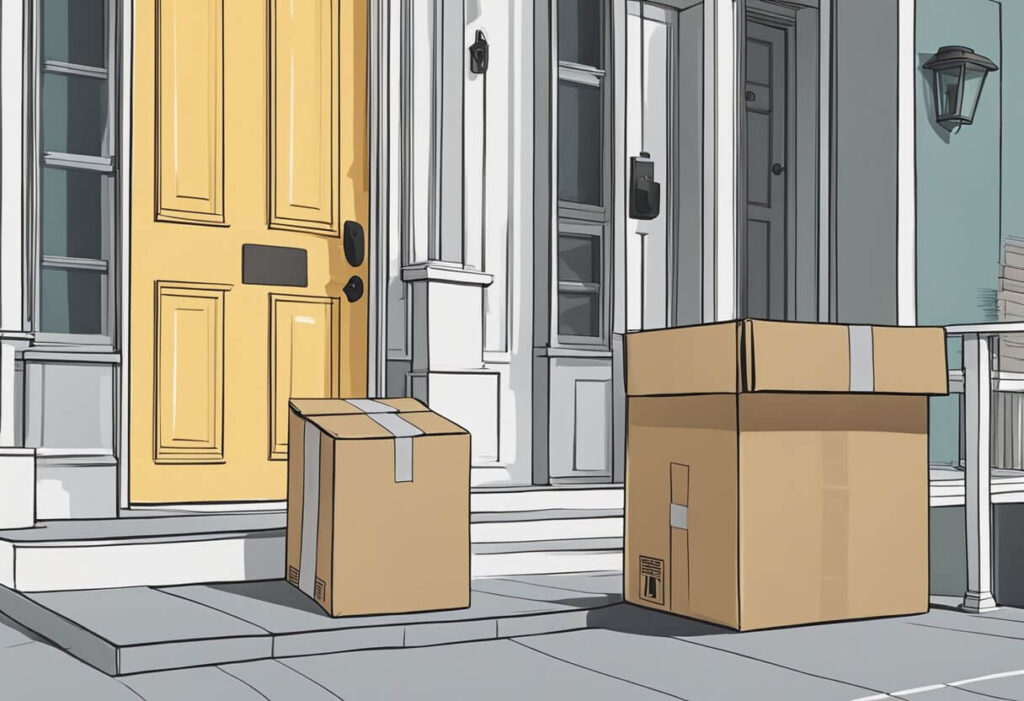
Recipients frustrated by absent packages delivered awry have several consumer protections at their disposal. The following steps should kickstart the trail towards replacing or refunding lost orders.
Step 1: Contact the Carrier
The first priority is alerting the shipping entity (USPS, UPS, FedEx or another) about the errant delivery by calling customer service or filing a claim online. Provide pertinent details like shipment dates, tracking number, addresses and delivery confirmation records. You must report issues promptly or claims could get denied.
The carrier will launch an investigation to pinpoint the actual delivery location using their intricate tracking databases and attempt retrieving it for proper redelivery.
Step 2: Inform the Seller
Contact the e-commerce site, merchant or vendor who sold the product by email or phone. Explain the improperly delivered shipment situation and your actions thus far working with the shipping company.
Responsible sellers stay engaged throughout this resolution process with carriers, even if liability rests with delivery firms. They’ll provide supplemental tracking insight while determining whether replacement, reshipment or refund makes sense once sufficient time passes.
Step 3: File an Insurance or Credit Card Claim
Neither the vendor nor carrier provide concrete answers after a couple days or the order gets officially declared lost? File claims through insurance or card issuers before time limits expire.
Insuring expensive goods provides necessary financial protection. Standard carrier liability limits usually only cover around $100 value. Anything above requires “declared value” insurance for fuller reimbursement if items go missing.
Credit card purchase coverage also refunds costs on undelivered or falsely documented deliveries. Dispute the charges for your purchase and provide all documentation.
Step 4: Consider Delivery Change Options
Going forward consider requiring recipient signatures upon future deliveries or leverage secure smart lockers in lieu of front porch drops prone to theft. Too many mishaps? Get packages sent to work addresses or PO boxes instead of dubious home locations.
How Carriers Handle Misdirected Package Issues?
Now let’s examine some standard procedures transportation and delivery outfits employ specifically around wayward parcels.
Extensive Tracking Technology Assistance
Modern carriers leverage sensors, barcode scans and other infrastructure across planes, trains, warehouses and trucks to amass terabytes tracking every shipment’s movement. Support agents access this in-depth data during missing package customer inquiries to pinpoint problems.
It’s not a perfect system – some exceptions fall through the cracks – but for most shipments, agents can determine when and where drivers made wrong turns or if complications like weather disruptions arise. This empowers them to reconstruct what went wrong and zero in on solutions.
Designating Responsibility Differently
Despite this abundance of intelligence, each company designates liability differently. USPS plainly considers properly scanning packages as delivered at listed addresses as the client’s responsibility regardless of porch piracy or other complications after the handoff. UPS and FedEx may provide slightly more latitude for post-delivery troubles.
But without declared value insurance, individuals run into roadblocks getting reimbursed for issues post-dropoff. And even insured claims face labyrinthian denial probability. Establishing exactly where handoffs took place ranks as critical for receiving payouts.
Preventative Initiatives
Transport carriers also continue investing in technology and process improvements aiming to lower incorrect deliveries company-wide.
For example, machine learning algorithms help identify high error propensity routes and labels. Route optimization rebalances delivery sequences prone to exhaustion based mixins. Compliance monitoring and auditing at warehouses pinpoints load/unload trouble spots.
And consumer-facing solutions like improved tracking notifications, rescheduling capabilities and revisions of liability rules also aid recipients.
Yet despite best efforts, millions of packages still go astray each year at major North American delivery outfits. Ultimately the sheer volume and hands in motion make occasional mistakes inevitable.
When Recipients Can Be Held Liable for Wrong Deliveries?
Receiving a misdelivered package addressed to a stranger inevitably provokes curiosity and confusion. Legal principles dictate senders hold primary responsibility for reclaiming wayward parcels sent to your doorstep. Yet in certain situations, keeping the undeserved goods could make recipients liable or even criminally culpable themselves.
Failing to Make Reasonable Efforts to Return Packages
Most jurisdictions require finding “reasonable” methods to return errantly delivered packages to rightful owners without excessive burden. Simply keeping the unsolicited household item or electronics delivered by FedEx violates fairness qualifications in many districts. Doing nothing absolves you of complicity.
Instead certain diligence qualifies as reasonable to avoid unlawful possession:
- Attempting to contact the sender via a return address
- Notifying the delivery carrier like USPS
- Holding goods for a 30-90 days awaiting pickup
Technically, laws around recovering shipping costs make senders responsible for reimbursing your efforts and fetching packages thereafter. But legal complexities dissuade most patron from seeking expenses. Still, retaining items indefinitely without communicating matches theft in certain areas. Know your state laws.
Violating Criminal Laws Around Theft by Taking
While misdelivery disputes usually play out civilly in small claims courts, prosecutors press charges if deceitful intent gets proven. Intentionally allowing delivery of high value goods falsely addressed to your residence aims to unlawfully enrich yourself.
And brazenly keeping such expensive items delivered on false pretenses matches criminal “theft by taking or deception” in most places. Even criminally negligent “failure to make required disposition” fits not bothering to notify USPS or the sender of valuables landing on your porch discloses guilt in many jurisdictions.
Don’t mistake lost carrier parcels for free gifts – make reasonable attempts to return or report packages that don’t belong to you.
Signing For Packages Designated With Other Names
When expecting a vitally important package yourself, the temptation looms large to accept any parcel left on your doorstep by UPS or FedEx without checking labels too carefully. Yet signing for a delivery with another person’s name constitutes willful deceit in most courts.
For example, Bernard eagerly awaits medication for a family member needing immediate treatment. A large box sits waiting when he returns home with medicines branded as arriving that day. Without thoroughly vetting the actual addressee printed on shipping labels, Bernard hurriedly scrawls an ineligible signature to receive the container on his porch containing someone else’s $2000 HDTV order actually destined for the neighbor.
Even without evil intentions,most states consider Bernard unlawfully took possession via intentional impersonation or fraud. Charges get compounded by costly items involved escalating grand larceny offenses.
Scrutinize any delivery acceptance for accurate designees and refuse packages clearly addressed to others without exceptions. Being overanxious for your own shipments won’t exonerate signatory frailty. Don’t let impatience turn you into unwilling porch pirate.
Failing to Report Missing or Damaged Goods
While rarely criminalized, another misdirected delivery misdeed involves accepting an unsolicited package externally intact then later claiming contents got damaged or stolen after opening. For instance, a FedEx driver drops a heavy box addressed unknown individual at Paula’s rental unit. Upon discovering $1500 sound system components packaged within now ruined without visible exterior indication, she reports interior conditions to the retailer hoping for compensation.
But without prompt refusal and damage annotations at first dropoff, Paula likely gets accused by merchant of scam for her tardiness. E-tailers must verify claims which they can’t surmise afterwards externally. Unless photographic evidence proves otherwise, Paula faces fraud concerns challenging her ethics and credibility. Refuse unverifiable packages unconditionally to avoid complications.
Bottom line: failure to make reasonable efforts absolving yourself of responsibility for misdirected packages either through laziness or deceit often carries legal and criminal consequences depending on specifics. When in doubt, talk to authorities about proper protocols.
Who Pays for Lost Packages When Responsibility is Disputed?
Despite the best efforts of buyers, sellers and carriers, packages get lost in transit more often than anyone admits. High volume logistics centers obviously misplace some fraction of parcels.
Yet responsibility disputes muddle account allocation frequently. Sellers blame undelivered claims on delivery contractors. Contractors point to erroneous client addresses missing verifications. Consumers stand bewildered often eating costs despite good faith agreements by merchants.
Insurance Policies Dictate Reimbursements
Litigation complexity steers most customers away from lawsuits given legal costs outweigh small order values. So third party insurance terms often decide remunerations.
Both major carriers and eCommerce stores offer declared value parcel protections during initial label purchases for modest fees averaging between 2-10% of item price tags. Rates fluctuate based on risk factors like delivery distance fragility, cinder block density composite limiting damages in accidents.
Insuring valuable merchandise shipped provides necessary financial protection when transactions get disputed later. Savvy businesses or customers eyeing big ticket products should invest extra delivery insurance when doubt exists over who accepts blame for freight mishaps down the road. Because despite external forces in play, someone ultimately pays for goods disappearing along the contracted chain of custody.
So review insurance terms thoroughly and fill any gaps where uncertainty lurks. The small upfront premiums provide peace of mind safety nets limiting liability exposures if gremlins or disagreements encumber orders despite preventative safeguards. Apply lessons learned about coverage limits to raise protected values commensurate with potential problems deciphered from past hassles. Forearmed beats regretful any day.
Standard Carrier Liability Limits
Absent any extra declared value endorsements mentioned earlier, baseline carrier contracts with mass retailers publishing policies on websites or documents set expectation
for maximum payouts from FedEx, DHL, and United States Postal Service should items get damaged or lost irrevocably.
USPS freely admits responsibility ends after postal employees make confirmed deliveries on record to listed addresses. Their liability tops out at $100 insurance included no questions asked at no additional subscriber cost on Priority and Express packages. Anything more in coverage justifies added fees.
UPS and FedEx respectively cap liability at $100 without assertion values topping that either under Terms & Conditions legally binding users who fail to formally declare enhanced coverage during initiations before irrevocable handoffs. Doubly insuring parcels drives premium costs higher of course, so approach balancing risks thoughtfully across all providers shipping goods.
Claims Paperwork Burdens
Successfully winning insurance claims requires proper forms and documented proof about missing/damaged contents too for postal inspector processing. Simply calling toll-free customer service lines pleading won’t suffice anymore without submitting well orchestrated appeals.
Think carefully beforehand what replacement value means, then derive formulas pricing possessions ahead of retail deductions or depreciations over usage time. Finding comparable pricing research markers took effort before shipping first package enhances winning disputes later. Don’t assume compensation levels equal brand new prices originally paid if submissions ended up less convincing without solid foundations.
Also know package weigh distribution balances factored into payout maximums too. If insuring $500 laptop inside large box containing another $300 merchandise, ask adjuster about partial reimbursement rules governing multiple goods claims. Reality suggests full coverage uncertain given physical damages impact totals vaguely unless meticulously delineated ahead in descriptions.
Bottom line: successfully recovering allowable reimbursements requires proper planning, research and execution after unfortunate package mishaps. Treat insurance submissions like professional projects worthy of maximum outcomes. half-hearted paperwork trails practically guarantees lower fractional settlements barely compensating inconveniences caused already. Think win-win compromises backed by evidence earning inspectors trusts first.
The Steps To Get Refunded or Replacement for Errant Delivery
Any customer frustrated by a misdirected delivery desperately wants the whole situation remedied as soon as possible. But finding resolution requires methodical escalation through proper channels before relief gets delivered either financially or physically.
Here are structured processes buyers follow to get remuneration for packages gone astray:
Step 1: Report Failure to Receive Order
Hours or days after expected arrival without delivery formally logged, initial notifications go to the merchant or shipping carriers regarding missing merchandise. Details like order numbers, expected arrival dates, tracking numbers and last scans provide key particulars expediting further searches. Wait too long though past allowable claims periods (which vary by merchant and carrier) and your rights to make a claim can be forfeited or denied.
When reporting to the merchant or carrier, provide as many pertinent details as possible, such as:
- Order number
- Expected delivery date
- Recipient name and shipping address
- Tracking number if available
- Date and time of last scan showing progress
- Description of merchandise ordered
- Screenshots of order confirmation emails etc.
The more relevant information furnished upfront, the quicker and more efficiently carriers and shippers can research problems and attempt to locate missing items still in transit with a chance of successful delivery. Being organized and proactive aids significantly in getting issues escalated and corrected before optional refund periods expire. So act fast with all supporting particulars on hand to start tracing lost packages.
Step 2: Submit Required Claims Documentation
To formally seek remuneration, collate necessary evidenciary documents regarding your purchase, delivery attempt records, communications with merchants and carriers plus narrative explaining unforeseen misdirection. Having organized records simplifying next reviews proves instrumental towards judging qualification status overcoming common claim denial scenarios. Prepare multiple copies as back-ups too knowing submissions occasionally misplace tendered petitions improperly. Don’t let disorganization or oversight sabotage satisfactory closure if package rerouting remedies don’t suffice initially.
Step 3: Escalate Issues Higher Up If Needed
If frontline customer service fails resolving missing order traces within expected timeframes, don’t hesitate elevating grievances up the management ladder seeking authoritative intervention forcing reconsideration of earlier unfavorable determinations however previously justified internally. Politely stress your reasonable dissatisfaction given pronounced delivery complications and need for leadership addressing this promptly under extenuating loss circumstances.
Master tactful escalation without antagonization – empowered mediators focused on maintaining brand loyalty carry more weight addressing members bearing ill convenience from subordinate handling deficiencies. But exhausted patience precedes executive escalations as last resorts hoping sufficient good faith gestures get extended realigning customer fulfillment made whole again.
Step 4: Explore Legal Channels If All Else Fails
Should all standard escalation methods exhaust unsuccessfully retrieving payments or products lost purchasing online despite proper procurement protocols completed beforehand with both merchant and contracted carrier, consider consulting consumer protection attorneys. Most initial discussions cost little while assessing case merits.
Contingency lawyers sometimes pursue strong claims on consumers behalf directly extracting satisfactory settlements from diffuse corporate entities seeking avoidance of public legal actions. Having authoritative representation drafts stern demand letters or court filings garners serious reception beyond everyday call center capacities.
Of course litigation pathways pose their own stresses ultimately resolved satisfactorily dependent upon numerous factors. Still rights don’t dissipate automatically without exploring regulated channels first before relinquishing recoveries back voluntarily despite steep convenience taxations already paid dealing debacles undeservedly.
Final Thoughts
Mistaken parcel routing inevitably injects unwanted inconveniences for online buyers eager receiving orders intact as described during purchase phases. Success tackling couriered shipment detours relies upon customer diligence tracing root causes while pressing responsible parties correcting matters suitably.
Carefully document delivery shortcomings when evident for reference pursuing refund or replacement item sending. Submit thorough appeals to merchant and carrier claims departments seeking equitable compensation guarantees backed by irrefutable timelines showing probable liability. Exhaust patience completely before traversing steeper litigation courses solely where deemed absolutely necessary escalating further as last resort options when outweighed.

